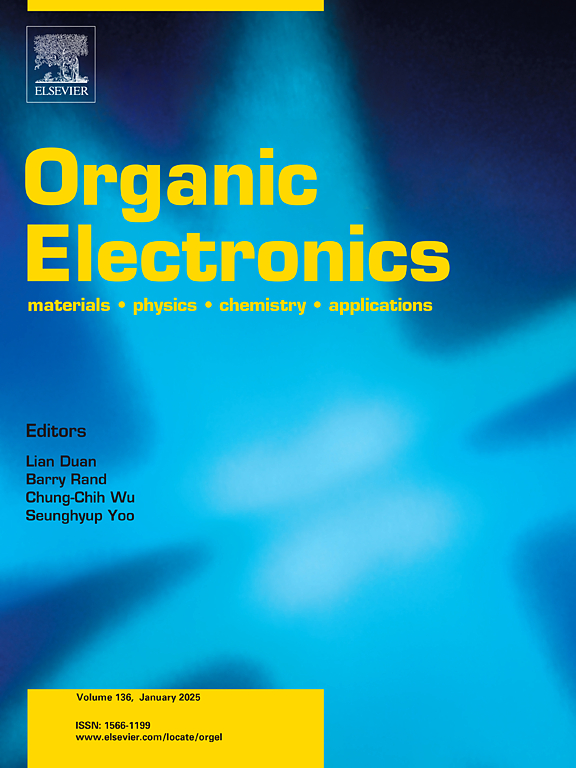Correlation between charge-carrier distribution and local crystallinity in organic films
IF 2.6
4区 工程技术
Q3 MATERIALS SCIENCE, MULTIDISCIPLINARY
引用次数: 0
Abstract
Understanding charge transport in organic semiconductor films is essential for optimizing organic electronic devices. Organic films often exhibit complex morphologies, consisting of crystalline and amorphous phases, which significantly affect charge carrier distribution and transport. Moreover, film morphologies evolve under operational conditions, especially in flexible devices that are subjected to mechanical stress. Here, we investigated the relationship between charge-carrier distribution and film morphology in organic films based on device-level simulations. A Monte Carlo method for morphology generation and master equation simulations were employed to obtain steady-state charge-carrier densities. Our results showed a strong correlation between local charge density and local crystallinity near the injecting electrode in hole-only devices. However, this correlation diminishes between the electrodes and near the collecting electrode. Additionally, the strength of the correlation is dependent on the grain size, the observation length, the energy-level difference between phases, and the applied voltage; these phenomena revealed the detailed features of nonuniform charge-transport pathways in organic films. These findings provide insights into the relationship between film morphology and charge transport, informing the optimization of organic electronic devices, particularly flexible ones that operate under mechanical stress.

有机薄膜中载流子分布与局部结晶度的关系
了解有机半导体薄膜中的电荷输运对于优化有机电子器件至关重要。有机薄膜通常表现出复杂的形态,由结晶相和非晶相组成,这显著影响着载流子的分布和传输。此外,薄膜形态在操作条件下会发生变化,特别是在受到机械应力的柔性器件中。在此,我们基于器件级模拟研究了有机薄膜中载流子分布与薄膜形态之间的关系。采用蒙特卡罗法进行形貌生成和主方程模拟,得到稳态载流子密度。结果表明,在纯空穴器件中,注射电极附近的局部电荷密度与局部结晶度之间存在很强的相关性。然而,这种相关性在电极之间和收集电极附近减弱。此外,相关性的强度取决于晶粒尺寸、观测长度、相位之间的能级差和施加电压;这些现象揭示了有机薄膜中非均匀电荷输运路径的详细特征。这些发现为薄膜形态和电荷输运之间的关系提供了见解,为有机电子器件的优化提供了信息,特别是在机械应力下工作的柔性电子器件。
本文章由计算机程序翻译,如有差异,请以英文原文为准。
求助全文
约1分钟内获得全文
求助全文
来源期刊

Organic Electronics
工程技术-材料科学:综合
CiteScore
6.60
自引率
6.20%
发文量
238
审稿时长
44 days
期刊介绍:
Organic Electronics is a journal whose primary interdisciplinary focus is on materials and phenomena related to organic devices such as light emitting diodes, thin film transistors, photovoltaic cells, sensors, memories, etc.
Papers suitable for publication in this journal cover such topics as photoconductive and electronic properties of organic materials, thin film structures and characterization in the context of organic devices, charge and exciton transport, organic electronic and optoelectronic devices.
 求助内容:
求助内容: 应助结果提醒方式:
应助结果提醒方式:


